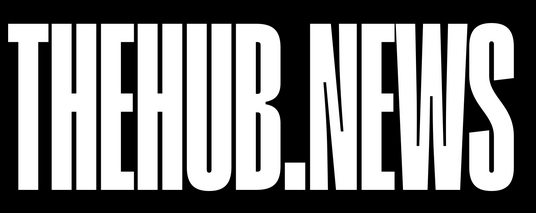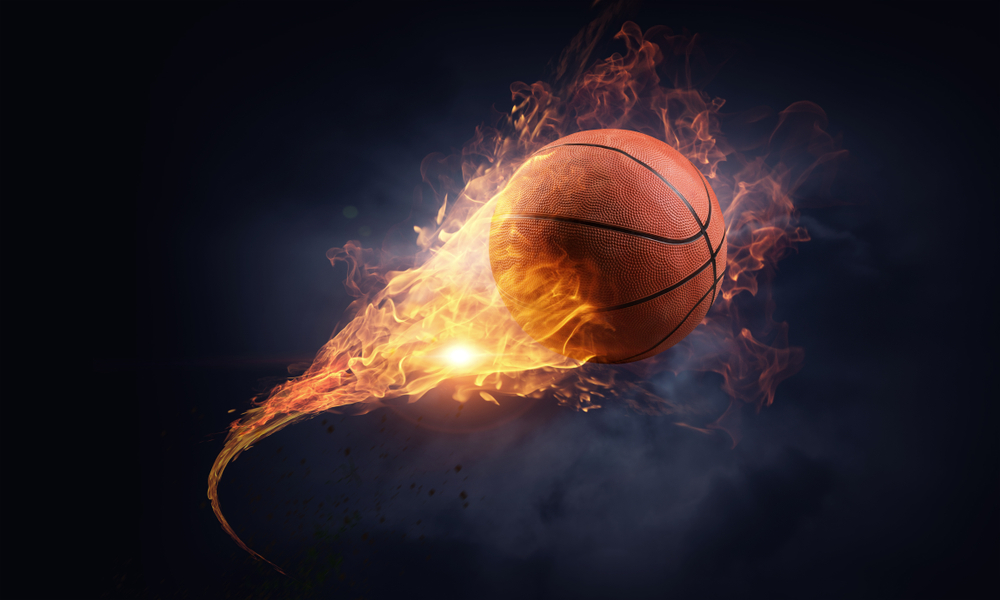Memphis professional basketball took decades to achieve stability. The chronicles are intriguing and, at times, incredulous. While the NBA’s Grizz’ currently thrives, another “starting five” within the metropolis has ensnared its allotment of the national limelight.
NEW ORIGINS
The newly formed New Orleans Buccaneers were influential in the inaugural season (1967-68) of the American Basketball Association (ABA). They advanced to the ABA Finals with guard Larry Brown running the point and feeding such offensive stalwarts as Doug Moe, Jackie Moreland, Austin “Red” Robbins, and James Jones. Unfortunately, despite holding a three-games-to-two lead (and the opportunity to close out the series at home), they fell to Connie Hawkins and the Pittsburgh Pipers in seven games. But in the aggregate, the season was a success.
Astoundingly, they traded leading scorer Doug Moe and Larry Brown (both all-stars) to the Oakland Oaks for 6’5” guard Steve “Snapper” Jones and forward Ron Franz in the offseason. Jones was an outspoken, melanated gentleman who had grown up on the West Coast and played collegiately at the University of Oregon. Admittedly, “Snapper” had not experienced pellucid racism at that juncture; thus, relocating to the Deep South would be a novel venture. He raised his concerns to head coach James Harrison (“Babe”) McCarthy.
JONES: “I’m happy to be coming down there, but will there be any problems in terms of housing?” [1]
McCARTHY: “Don’t worry about it, son. You just come on down. Hell, we’ve got damn integrated housing. No problem.” [1]
Jones recalled, “I had a gut feeling that it would be tough to get an apartment. I found out that there were only two decent places that would take [African-Americans]. I can’t remember the name of the first, but the second was in Algiers, Mississippi, and I wasn’t about to stay in Algiers, Mississippi. I spent the first four months in the Sheraton Hotel on Canal Street, going out most days to look at apartments, seeing a “vacancy” sign in the window, and then being told there were no vacancies.” [1]
He continued, “[Coach McCarthy] suggested that [Bucs power forward] Gerald Govan and I should live together. Govan was from New Jersey, and he was in the second season with the Bucs, but he had lived with a Black family in town, as a lot of the Black players did. He had already spent a year in New Orleans, and he didn’t know any more about how to find a place than I did.” [1]
BOURBON TO BEALE STREET
The Buccaneers again qualified for the playoffs in 1969 before falling to the eventual league champion Oakland Oaks, by then loaded with Moe and Brown, Rick Barry, Warren (Armstrong) Jabali, Gary Bradds, Ira Harge and sensational head coach Alex Hannum. They were still solid during the 1969-70 season, finishing second in the Western Division. In 1971, the Bucs fell off and failed to qualify for the postseason. By then, fan interest had decayed to nil.
The franchise relocated up the Mississippi River to Memphis, Tennessee.
During the 1970s, fans scarcely made turnstiles click in Memphis. The ABA tried hard. Talent disembarked and disappeared in waves, but management needed improvement. PR and marketing were dubious and, frequently, a nonentity. The team nickname morphed from Pros to Tams. Some players who were part of the ABA Memphis lore are listed below. (*Indicates a telephone interview.)
*LEE DAVIS (‘GEEZER’)
I had anticipated speaking with the 77-year-old for at most 10 minutes. We ended up chatting for over 60 minutes. For at least 90% of that span, we laughed hysterically.
Lee Davis wasn’t a household name nationally. He would tell you he was “not even a household [name] in Memphis.” [2] As a youngster, he excelled in football and academically. He went on to North Carolina Central University (NCCU) on scholarship. Basketball came to him late. He was raw and discovered by the NCCU coach during intramurals, but hard work after a full-time transition to hoops paid dividends. In college, the nickname “Geezer” was bestowed upon him by his roommate as a freshman.
Subsequently, he signed with the ABA (spurning offers from the NBA’s Phoenix Suns and the NFL’s Dallas Cowboys), joining the New Orleans Buccaneers in 1968, and remained with them through their move from New Orleans into Memphis until the end of the 1973–74 season. Along the way, Lee had a modicum of notoriety and was featured in Sports Illustrated (March 1973) after coming off the bench, replacing the injured starting center Randy Denton, and going on an absolute offensive tear for several games. However, his colleagues already recognized him as a highly-skilled big man and a quiet, physical and menacing enforcer. Before his scoring outburst, he averaged 10 minutes a game over his first four seasons as a reserve. Given the opportunity to shine, he shot a torrid 56% from the field, averaging 21 points and 15 rebounds per contest.
During his streak, he received exaltation and praise from future Hall of Famers such as Julius “Dr. J” Erving (“This [guy] just doesn’t miss from anywhere around the key.”), and Billy Cunningham (“This cat can really play,” “Davis has an unstoppable shot!” raved Cunningham. “A hook that can’t be blocked!”). [2] Making the most of his opportunity, Davis was often at his very best when matched up against another future Hall of Fame enshrinee named Mel Daniels. In five consecutive games vs. Daniels and the Indiana Pacers, Davis put up magnificent numbers (points/rebounds): 36/8, 33/9, 32/12, 27/11, 23/12.
He was intimidating at a shade over 6 feet 8 inches and 240 pounds of solid muscle. NFL general manager Tex Schramm was in charge of the Dallas Cowboys. When Davis consummated his college studies and eligibility, Schramm aspired to bring Lee back to the gridiron as a defensive end. In the grand scheme, he envisioned pairing Geezer with another towering HBCU (Tennessee State) standout: the 6 foot 9 inch Ed “Too Tall” Jones. Unlike Jones, Davis had not played organized football in over three years and was not enthralled, especially with the relatively paltry pecuniary reimbursement.
SCHRAMM: “We got our eye on another guy, a year behind you, and we can see you two as a ‘set of [defensive] bookends’.”
DAVIS: “I’m number ten of eleven kids. In a Black family, by the time you get to number ten, ain’t nothing left but ‘hand-me-downs.’”
SCHRAMM: “But think of the prestige of playing in the NFL.”
DAVIS: “You take your prestige and try to get a loaf of bread at the grocery store.”
Schramm was nescient that he was conversing with a college graduate well-versed in finance and accounting. Furthermore, he negotiated with a young gentleman–Davis–with a cornucopia of prudence and common sense.
Regarding the city of Memphis, Davis enjoyed the pace of the town, stating that it reminded him more of his native Raleigh, North Carolina, than the “faster and crazier” New Orleans.
GERALD GOVAN (‘GO-GO’)
The Jersey City, New Jersey native was an all-around athlete growing up. A small school in Kansas was familiar with several athletes in his high school region (particularly Hoboken), and they came to recruit him. That school was Saint Marys of the Plains (which closed its doors in 1992). Govan put up excellent numbers and was sought after by NBA scouts. Unfortunately, the team to acquire his rights was the St. Louis Hawks. STL was stacked up front at the forward position and already had guys like Bob Pettit, Zelmo Beaty and Bill Bridges. That same year they had also drafted another big man who had led the NCAA in rebounds: Paul Silas. To this day, Govan will tell you that he was not initially prepared for the rigors and conditioning of that NBA training camp. Hawks head coach Harry Gallatin wore him out. Thus he was released but continued to play professionally overseas in Italy.
When the ABA formed, the 6’11” prospect took full advantage of his opportunity in New Orleans. Govan played all nine years of the ABA’s existence. He was known for his iconic “Buddy Holly” eyeglasses and became a fan favorite. By 1970, he was an All-Star in Memphis and one of the league’s most respected players. While playing with the Utah Stars, he became a mentor and lifelong friend to a rookie named Moses Malone–fresh out of high school in 1975.
*WARREN DAVIS
The former HBCU standout turns 80 this June. Contrary to popular belief, Davis grew up in Halifax, Virginia (not Atlantic City, New Jersey) before playing at North Carolina A&T University. Davis played in the ABA for six seasons and was a two-time All-Star. His best year came with the Los Angeles Stars, averaging 16 points/10 rebounds. Over his career, he averaged 12.2/9. The 6 foot 6, 235 pound Davis was versatile enough to compete at small and power forward positions.
When asked about his time in Memphis, Davis simply responded, “Memphis was cool. The food was great, and they certainly had a lot of history. I enjoyed my time there.”
*RANDY DENTON
Like Lee Davis, Denton also grew up in Raleigh, North Carolina. After starring at Enloe High School, the 6’10” prospect was besieged with more than 200 offers to play college basketball. He eventually chose nearby Duke University. He made an impact immediately as he attained All-ACC honors (3x, 1969-1971) in a conference stacked with future pro ball players (Charlie Scott, John Roche, George Karl, Tom Owens, Dennis Wuycik). To this day, he is the Duke Blue Devils’ all-time leader for average rebounds per game with 12.7. In addition, he also had six games in which he notched 20 points and 20 rebounds in his three-year varsity career. Denton says, “Those are the things [athletically] I’m most proud of coming out of Duke.”
He played 39 games with the Carolina Cougars in 1971 before joining the Memphis Tams in January 1972. In “Bluff City,” his game began to develop, as he averaged 17 points per game in 1973. Randy, who enjoyed his time in Memphis, recalled, “We had some great guys, but we never won and just couldn’t get it together,” Denton continued, “I had good two-and-a-half years [in Memphis]. But we never sold [Mid-South Coliseum] out. That was Memphis State University’s arena. During my final game there, we played against the Kentucky Colonels, and my [first] wife counted the number of people in the arena. There were 214 people. That was all.”
During his tenure with the Pros/Tams, Randy was known for his consistent play and for being the “white dude with the biggest, coolest afro.” With his style and hair length, he held his own in the swag domain with ABA players such as Darnell Hillman, Artis Gilmore, Dr. J, Mike Gale, (teammate) Mike Jackson, and the NBA’s Russ and Ron Lee, Rowland Garrett and Wes Unseld. When the movie Semi-Pro debuted, the consensus was that lead actor Will Ferrell should pay royalties to Denton for being an inspiration to his character. Memphis players joked with one another regarding the famous big man, “Will someone please tell Denton that he’s Black?”
After leaving Memphis, Randy played in Utah during the 1974-75 season. In Salt Lake City, he teamed up with Gerald Govan and rookie Moses Malone. It would be his only appearance in the playoffs during his ABA career. Unfortunately, the Stars came up against the juggernaut (65-19) Denver Nuggets and lost the series in six games. Nevertheless, Denton was splendid, averaging 18.8 points and over 13 rebounds per contest. He is a member of the North Carolina Sports Hall of Fame and the Duke University Athletics Hall of Fame.








